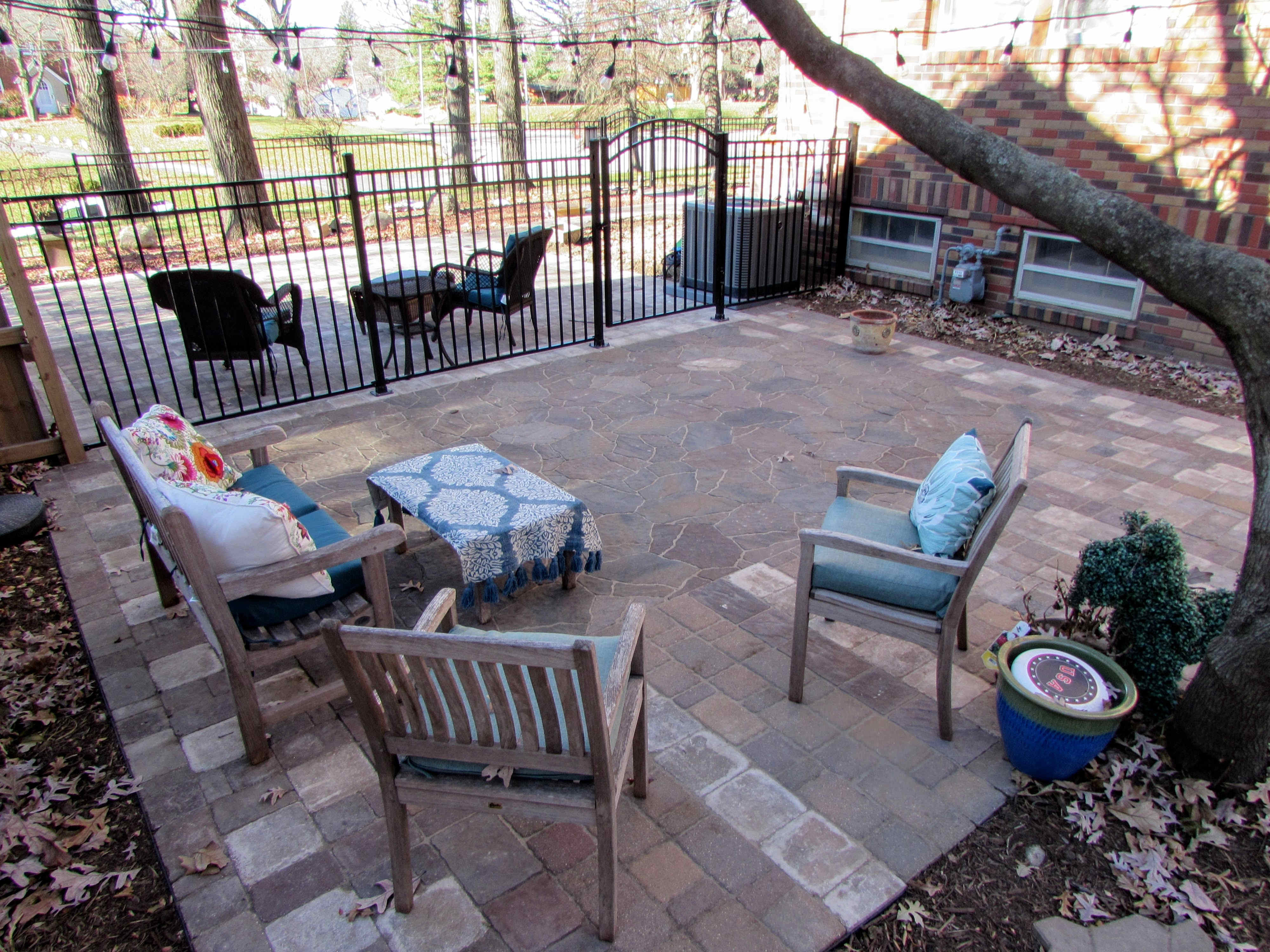When it comes to outdoor living, the foundation for almost all projects is the patio. The first step in turning a drab yard of grass or dirt into a living space to spend time with friends and family is to create a patio space in which you can add all kinds of accessories and furniture. There are two main kinds of patios; poured concrete and paver patios. At Capital Landscaping we specialize in paver patios because of their versatility, flexibility, and ease of maintenance. Because paver patios are made from individual pavers, they can be placed and cut to fit the tightest of spaces. They also come in a wide variety of shapes, sizes, colors, and textures, and are easier to repair and maintain.
Patio Placement
Depending on the size of your yard there are a few different options when it comes to placing your patio. One is to go directly off your home, and the other is to place the patio in its own space in the yard.
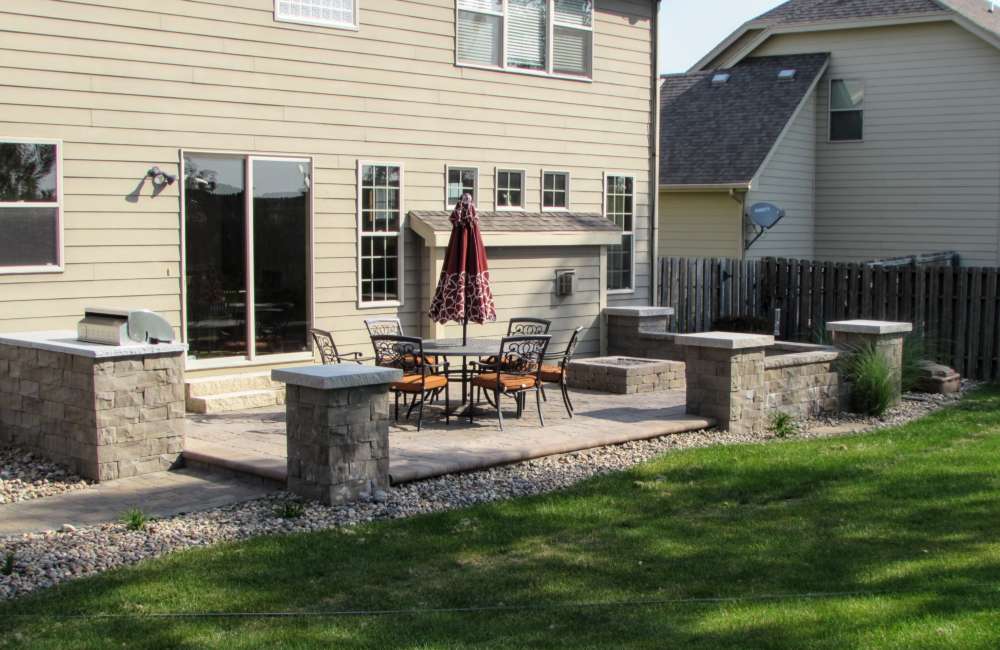
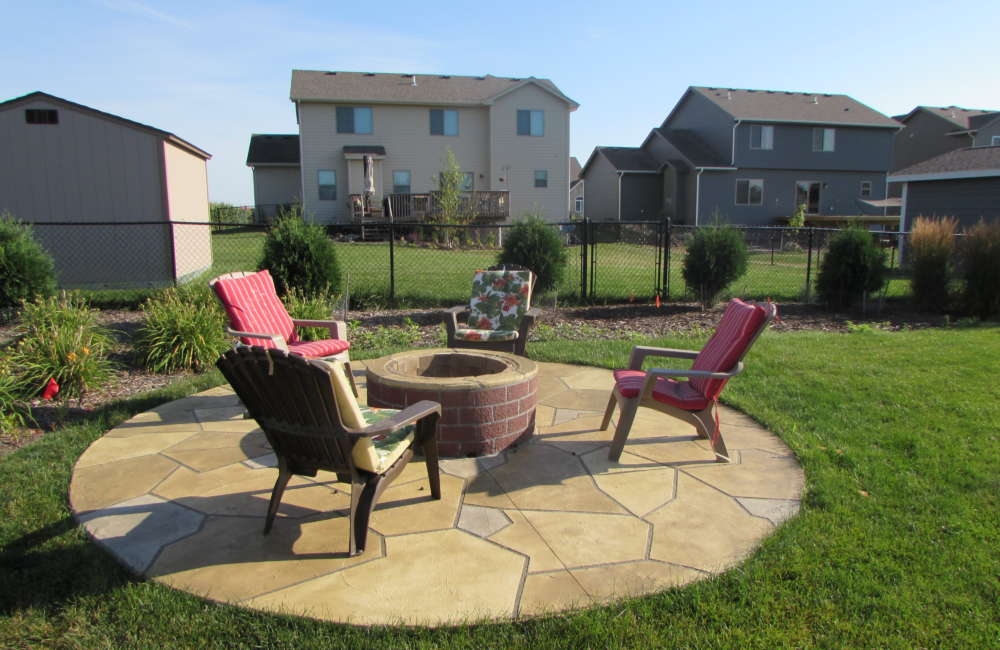
Regardless of where you decide to place your patio, the most important thing to get right when making a patio is grading. Patios set up directly off the home need to be graded to drain away from the house. This ensures that water does not run against the house and cause flooding problems, damage, or pool on the patio.
Likewise, patios installed in yard space need to account for the grade of the yard and where the water is already draining. They should be installed with grade to direct water off the patio and toward the natural drainage area of the yard. At times this is easier said than done, and drain tile may need be installed under patio areas to help with the flow of water into correct drainage areas of a yard. In Iowa, where we experience all kinds of weather, getting grade right is especially important to help prevent flooding issues in your yard or home.
Once grading and base are set though, the installation of pavers is a relatively simple process. Pavers are put into place and cut to fit the design. Paver patios can be as simple as a single type of paver in a square area, or become as complex as can be thought up with multiple types of pavers for body, border, and different design shapes within an area.
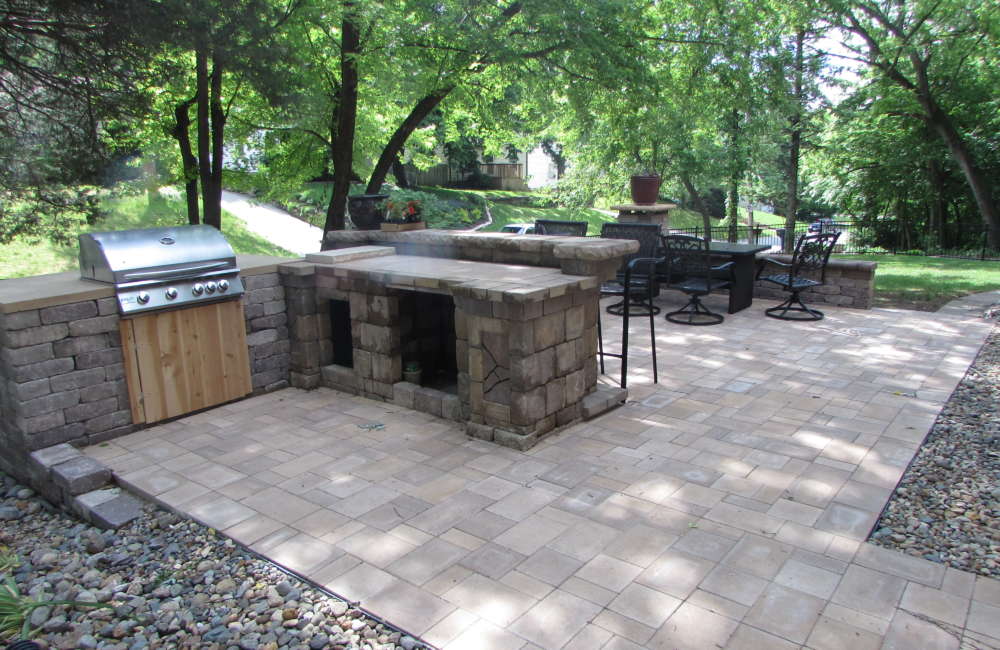
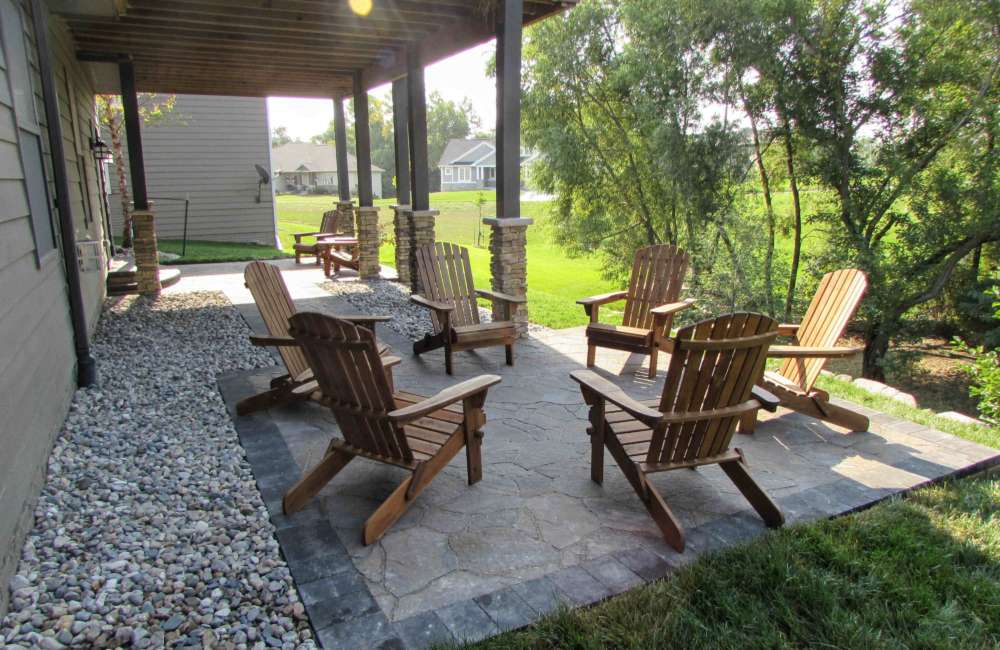
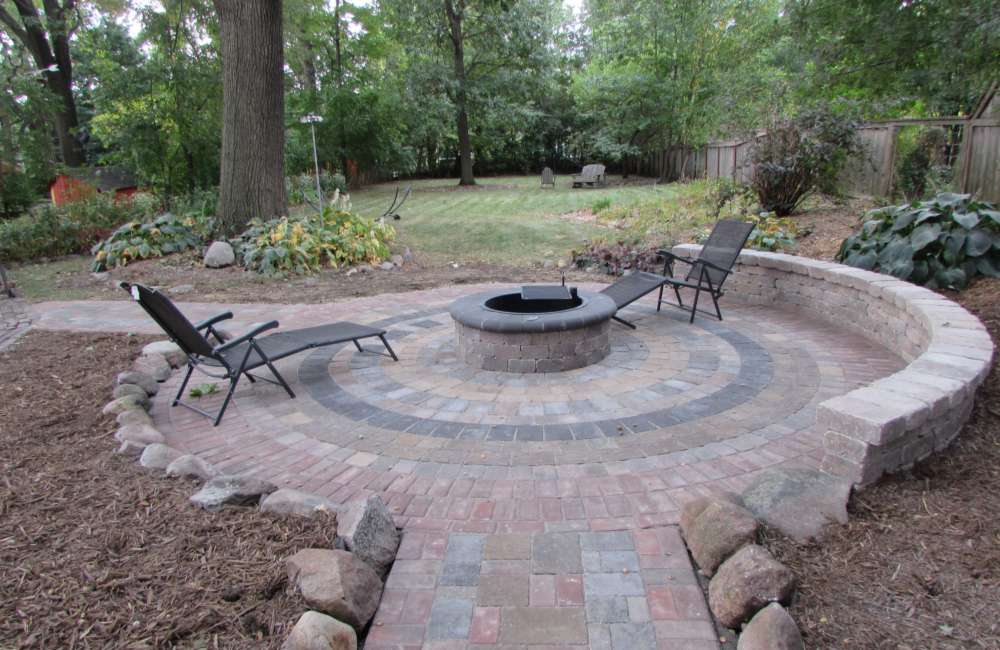
Paver Type and Selection
When selecting pavers to go with a design, there are two broad categories; permeable pavers and non-permeable. Permeable pavers are designed and laid to let water permeate down directly through the patio instead of running off the patio. This can be a better option for areas that don’t have a good place for water to be directed to flow and run off to. Instead, permeable pavers let water move down through the pavers, through a rock base, and into the ground mimicking the way ground naturally absorbs water. Permeable pavers even come in a variety of shapes to suit your aesthetic needs.
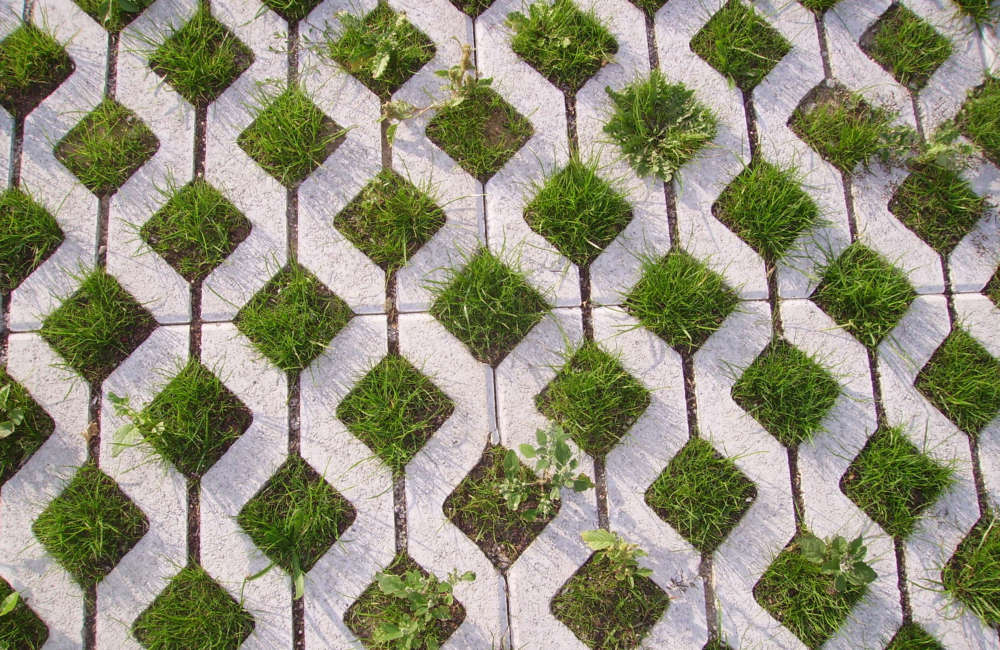
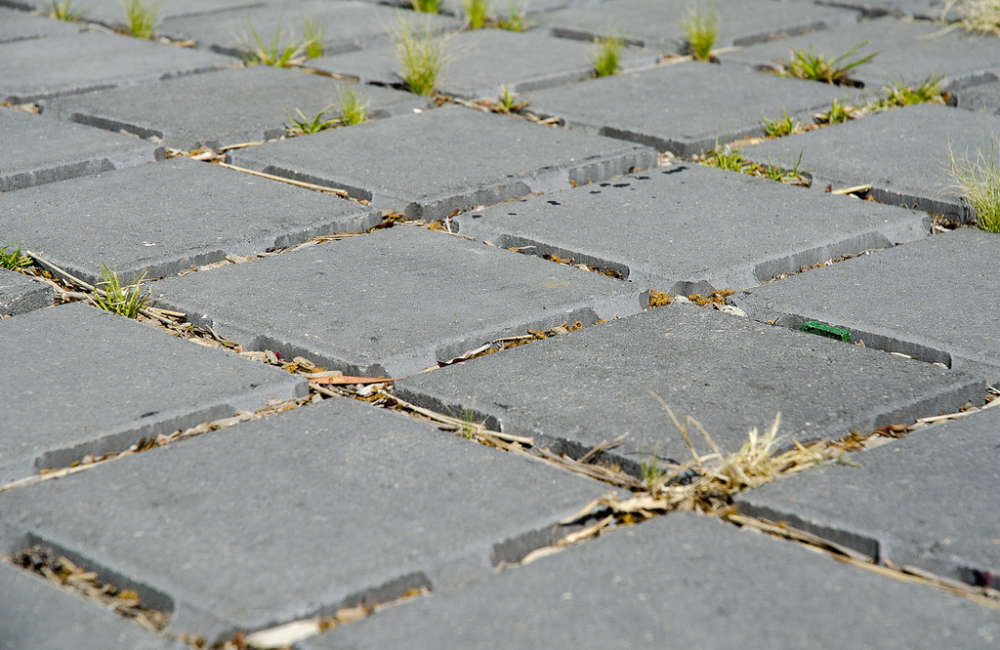
Non-permeable pavers come in a large variety of styles. There are cobble-like pavers, pavers that mimic the more natural cut stone look, and even pavers that provide a faux-flagstone look at a fraction of the cost of real flagstone.
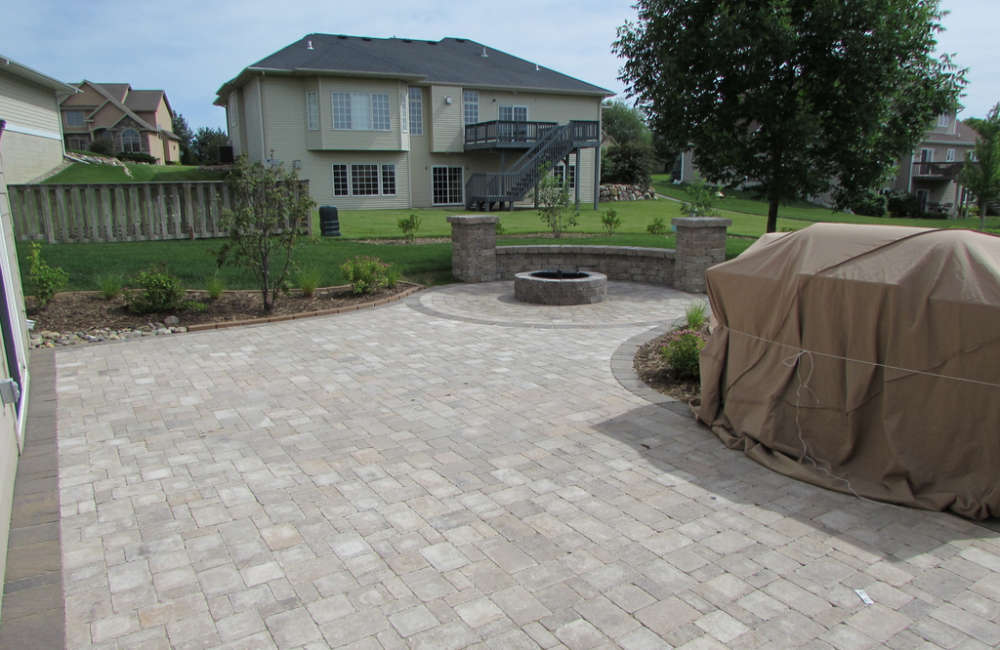
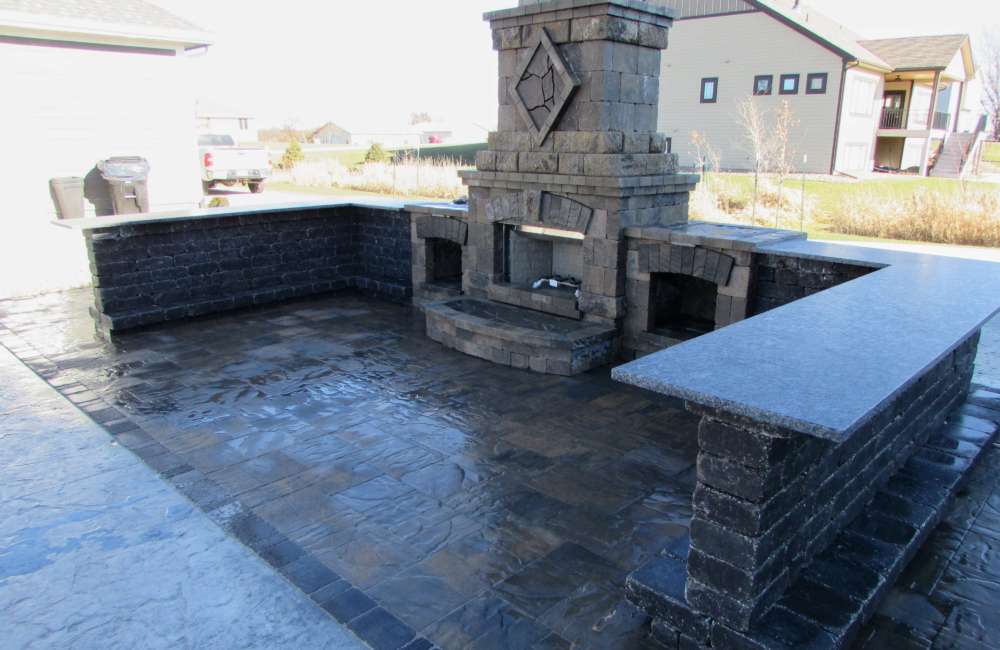
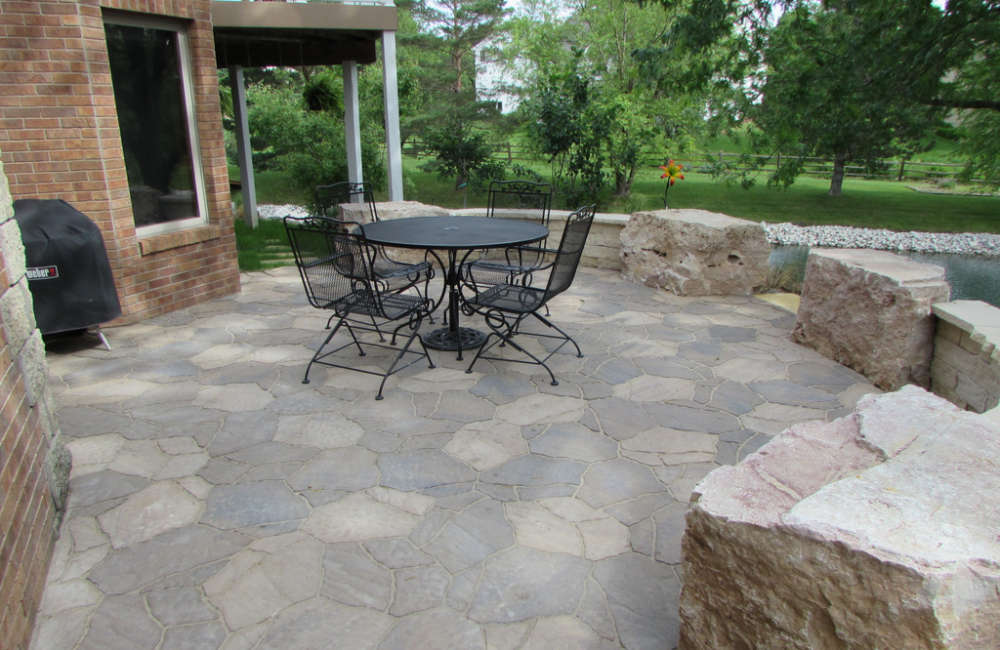
With so many options, every patio design is truly unique and can be custom made to fit your own individual style.
Patio Accessories
What’s important to remember is that the layout of your patio provides the base for where furniture or other “accessories” might go such as a grill or fire pit. Often times, fire pits become focal points of patios, but can really be placed almost anywhere within a patio space to fit your own needs and vision. Fireplaces also can be placed almost anywhere within a space but are popular along the edges of a patio. Grill centers also often take a spot on the edge but can be moved within the patio to create a unique gathering place and focal point for guests. Overall, good planning and design ensure that things are placed in a way that creates an easily utilizable space that matches with your vision whether it’s compact and homey, or modern and spacious.
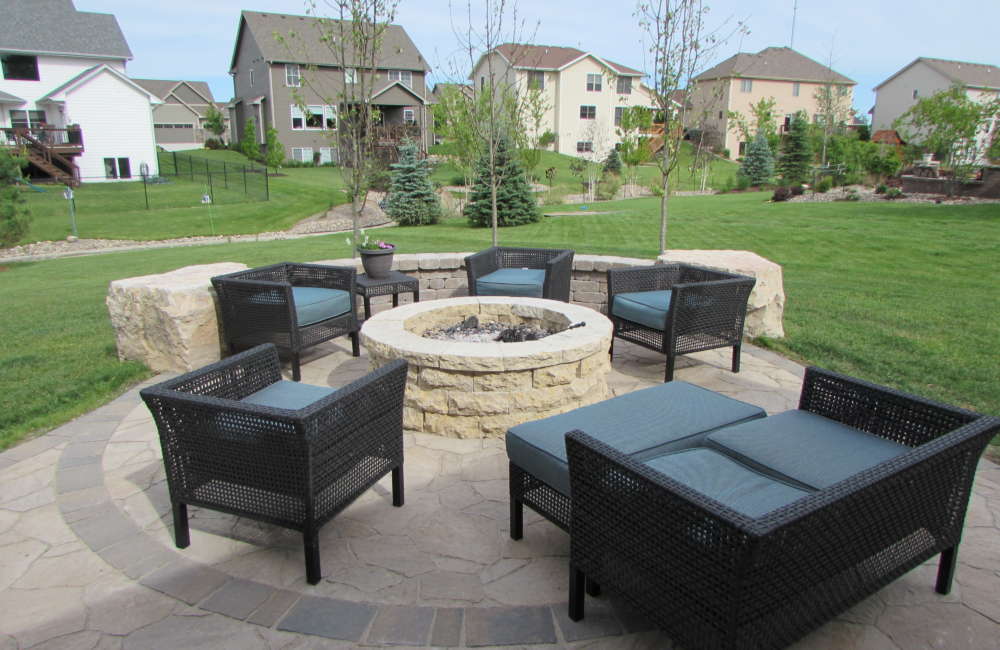
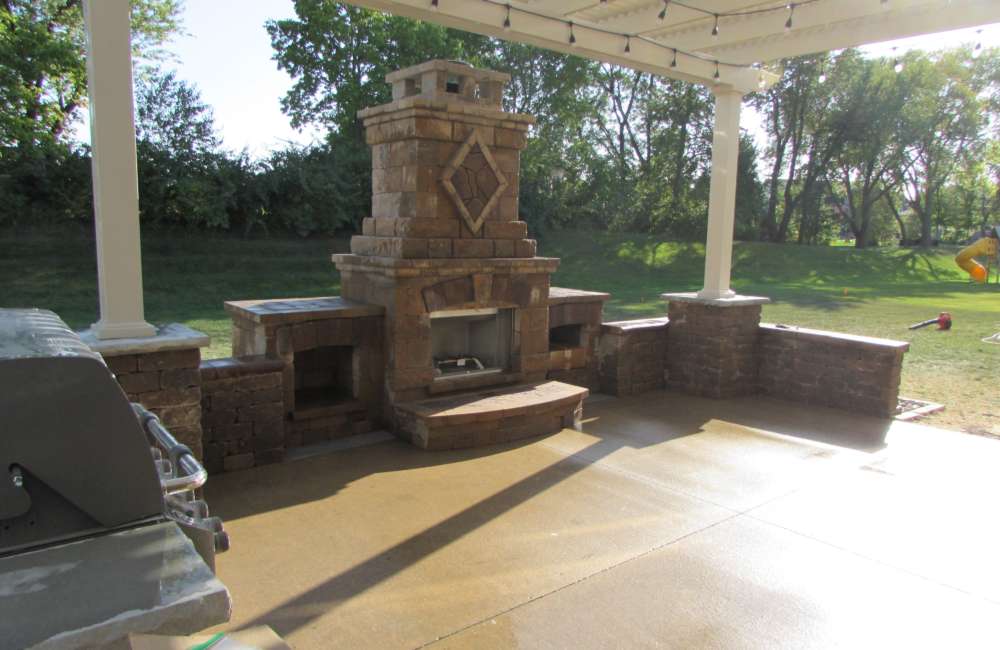
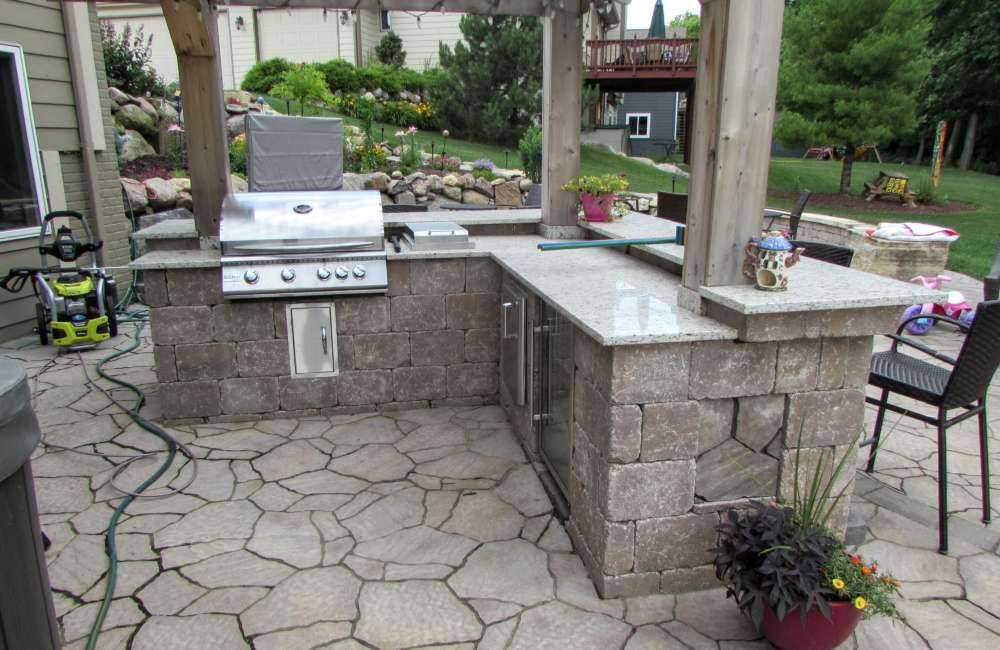
We have on our site here some different examples of patios to get your creative juices flowing! Some of the most unique and creative patios actually come from using a blend of different pavers, and if you are interested in something like this make sure to talk to your designer and plan things out carefully to ensure it will work with your project.
Frequently Asked Questions
What kind of maintenance do I need to do with my patio?
The most time-consuming aspect of taking care of your patio is the occasional weed control needed between pavers. This can be done by spraying early on with a weed killer to kill any new growth and prevent weeds, and also by occasionally pulling weeds early on while the soil is wet to get them out by the root.
Other maintenance over time may include touching up the polymeric sand as it tends to wash out little by little over time (touch up require every 5-10 years).
Will it settle over time?
Paver Patios are built on a compacted base to prevent large amounts of settling, but it if the ground wants to move it will move. No stopping Mother Nature. This is an issue that occurs with poured concrete as well as paver patios, the upside being that shifts in paver patios are easy to fix compared to cracks in concrete. Frost heave can occur with changes of season and other factors may cause the ground beneath your patio to shift. When this happens the patio may sink in places and cause pavers to sink with it. All that is needed to for someone to come in and add base and sand to the area, compact, and re-lay the pavers.
How long do the pavers last?
Pavers can last a lifetime. With good maintenance, you will never need to replace pavers. That said, pavers do fade over time from exposure to sunlight and weather, and heavy impacts on them can break them. Fading is natural with any outdoor product and pavers will maintain their color but may become harder to match if they need to be replaced. Newly installed pavers, even of the same type and color, will not look the same next to old pavers. Over time though, the new pavers will fade in color to closely resemble existing pavers.
Can I put ice melt on my pavers?
De-icing products can be used on pavers in moderate amounts. Overuse of the product can damage pavers though as well as concrete or flagstone.

